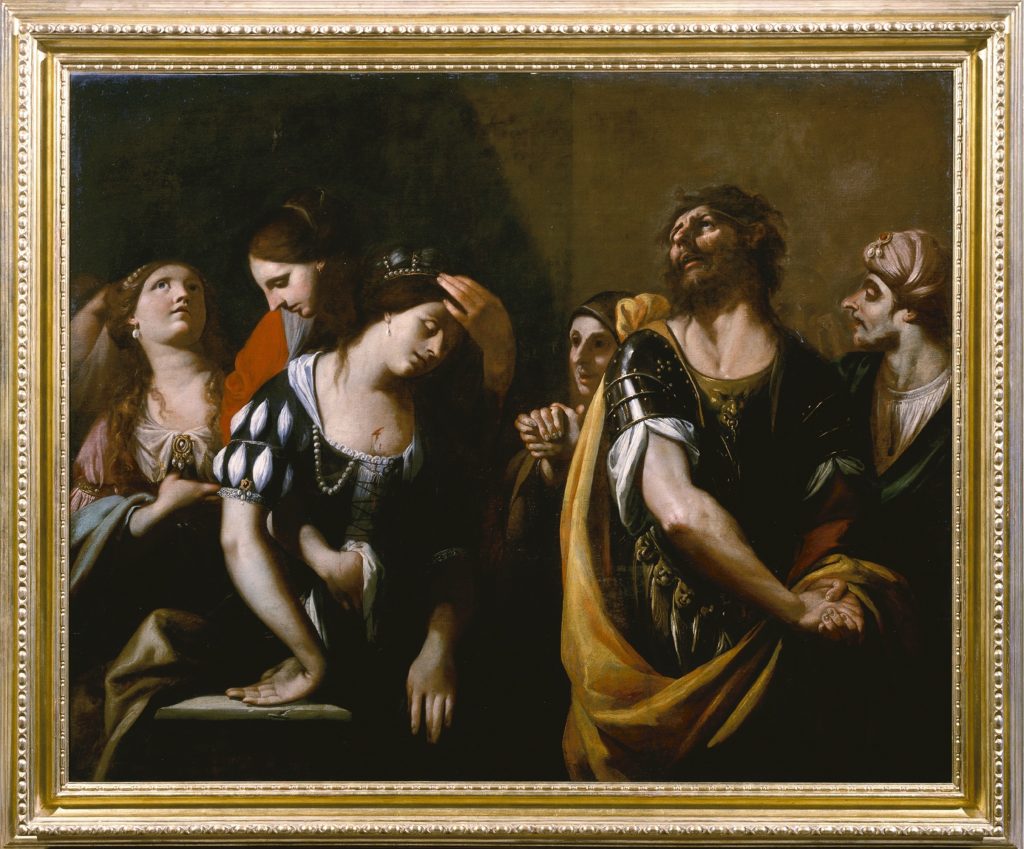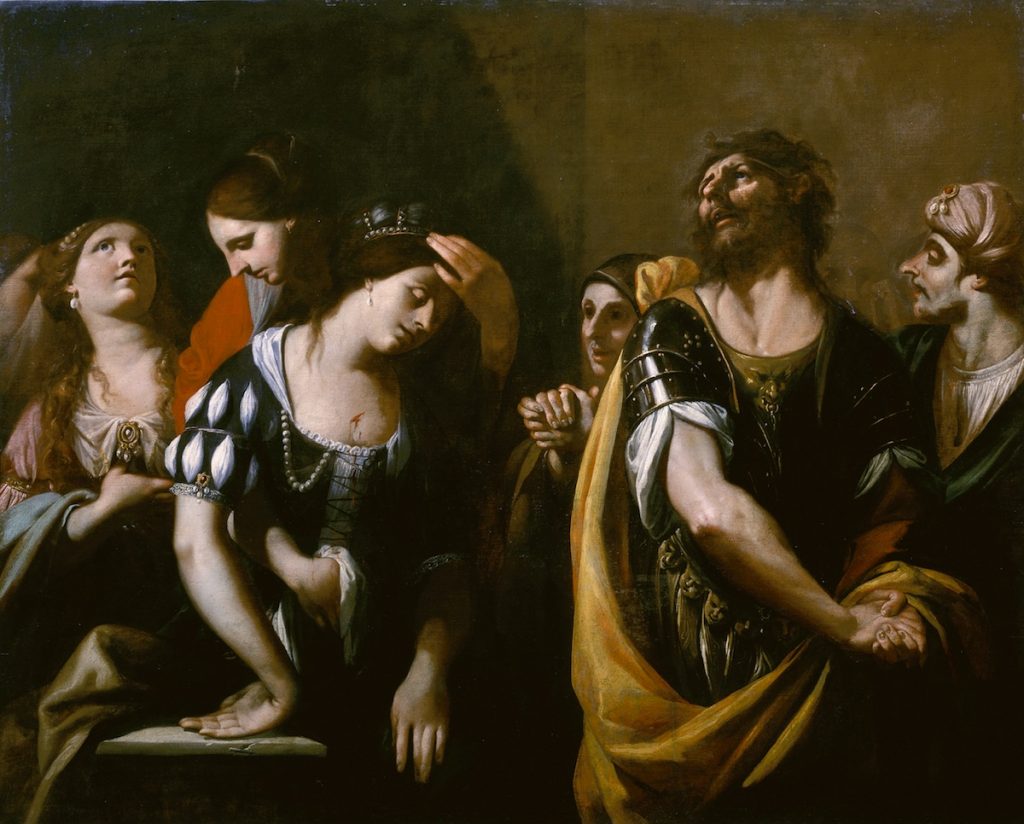PIETRO NEGRI
Venice, 1628-1679
Nero and Agrippina
oil on canvas, cm 141,5×172
Praised by contemporary biographers for his “exquisite manner of colouring, and for the nobility and subtlety of the composition of his paintings”, Pietro Negri belonged to the group of Venetian “tenebrosi” painters who followed in the footsteps of Giordano and Langetti. Fascinated by the strong colours used by the two artists from further afield, the “tenebrosi” dominated the scene in late-17th-century Venice, before Sebastiano Ricci and other great 18th-century masters introduced the neo-Veronesian style. Mina Gregori recognises Pietro Negri as the author of the painting. He trained in the sphere of Ruschi and Zanchi, as also indicated by Safarik, who wrote a monograph on this painter (1978). In the female figures on the left the scholar notes “Negri’s debt to Bolognese painting”, while, observing Nero’s emphatic gestures with his hands clasped, she supposes a link to the theatre “that was really establishing itself in Venice during the decades when the tenebrosi were active”. Negri tackled the same subject on at least one other occasion. The other painting, now in the Gemaldegalerie in Dresden, was painted in the 1670s. Although the figures have similar features, our painting differs from the other work in the use of more subtle chiaroscuro, leaving us to suppose an earlier date, going back to at least the middle of the century. In the background, between Nero and the figure wearing a turban, we can glimpse a mysterious face seen from the front, a pentimento that confirms the originality of the composition.


